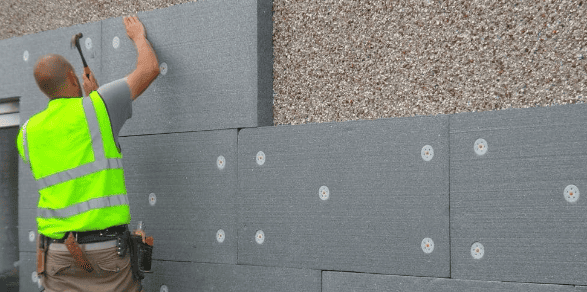External wall insulation sees insulation material applied to the exterior wall of a building. This guide explains what it’s made of and how it works to prevent heat from escaping.
What is it made of?
Exterior wall insulation is made up of four components. The first is an insulation layer usually made from expanded polystyrene or EPS. It can also be made from mineral wool or phenolic boards. EPS is the most commonly used material for insulation to stop heat escaping from a home.
The second element is a primer, which sometimes includes insulation properties to boost overall efficiency but essentially forms a barrier to stop moisture seeping in from the outside and makes the system waterproof. The primer is held in place with glass fibre mesh and a fixing anchor so that it stays put while it dries. Another primer layer is added on top of it before the whole thing is covered in render.
How does it work?
Exterior wall insulation keeps heat inside rooms which would otherwise be lost through conduction, convection and radiation. Insulation material locks heat inside and stops it from escaping through walls, therefore reducing heat loss and energy bills. It also prevents condensation, as internal walls remain warm and don’t attract moisture from the air.
The Energy Saving Trust advises that homeowners should use a specialist installer so that their exterior wall insulation is weatherproof and can achieve the required thermal performance. Fortunately, if you are looking for exterior wall insulation, there are plenty of specialists who can provide advice on the right system.
One key advantage of exterior wall insulation is that installation is quick, usually completed in under a week and doesn’t cause disruption in your home, as all work is carried out externally.



